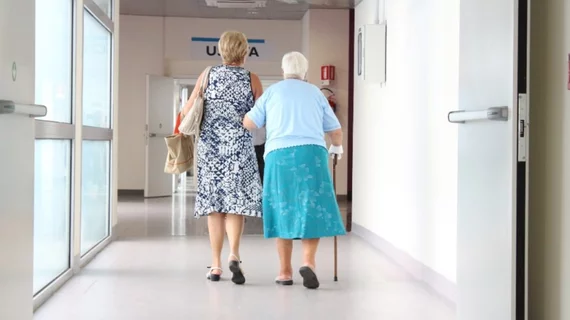LVAD patients spend nearly 1 in 4 days seeking care — is there a more effective way?
Heart failure patients with a left ventricular assist device (LVAD) spend a significant amount of time engaging in healthcare outside of the home, according to new data published in JACC: Heart Failure.[1] What can cardiologists and other heart specialists do to reduce this burden?
The study’s authors noted that, thanks to years of improvements in device design and patient care, LVAD implantation is consistently associated with improvements in survival and quality of life. However, there is still room for additional advances to be made.
“Quality improvement in LVAD care has expanded to include efforts to increase cost effectiveness, reduce resource usage, and decrease care burden for LVAD patients and caregivers,” wrote first author Sarah E. Chuzi, MD, a cardiology fellow with the Northwestern University Feinberg School of Medicine, and colleagues. “Studies to date have shown that LVAD therapy is associated with a high frequency of emergency department visits and hospital readmissions, and a high cost of care. However, a key patient-centered variable — the amount of time spent engaging in health care after LVAD — has not previously been examined.”
Chuzi et al. focused on data from 373 adult patients who underwent durable, continuous-flow LVAD implantation at a single high-volume U.S. hospital from May 2008 to December 2019. The mean patient age was 55 years old, 79% of patients were male and 54% were white. All patients survived the initial hospitalization after LVAD surgery. While 42% of patients went on to undergo heart transplantation, 21% died during the study’s follow-up period. Another 2% of patients underwent LVAD explantation.
Overall, the median number of days alive with the LVAD was 390. The median number of days with at least one healthcare encounter was 88, and the median number of hours receiving care was 592. This translates to patients spending nearly one in four days — and 5.6% of their total time alive — receiving care outside of the home.
“Although LVADs are associated with improved health-related quality of life and survival, the time patients spend engaging in the healthcare system after implantation remains significant,” the authors wrote. “These data suggest that ambulatory care specifically represents a viable target for optimizing care efficiency and delivery for patients with LVADs. The data also have implications for patient-centered counseling, whereby certain patients may expect to spend less time engaged in healthcare after one year of survival with an LVAD.”
The group also wrote that patients surviving one full year with an LVAD go on to spend fewer days engaged in healthcare after that first year.
“Although this finding suggests that the time burden of treatment may decrease for patients who survive for longer with LVAD support, the time burden of therapy remains substantial even after one year,” they wrote.
Related Heart Failure Content:
Empagliflozin may reverse vascular aging, lower CVD risk
TPV valves, CTO PCI and more: SCAI 2022 updates for interventional cardiologists
How did the pig heart transplant patient die? A preventable infection may be to blame
Reference:

